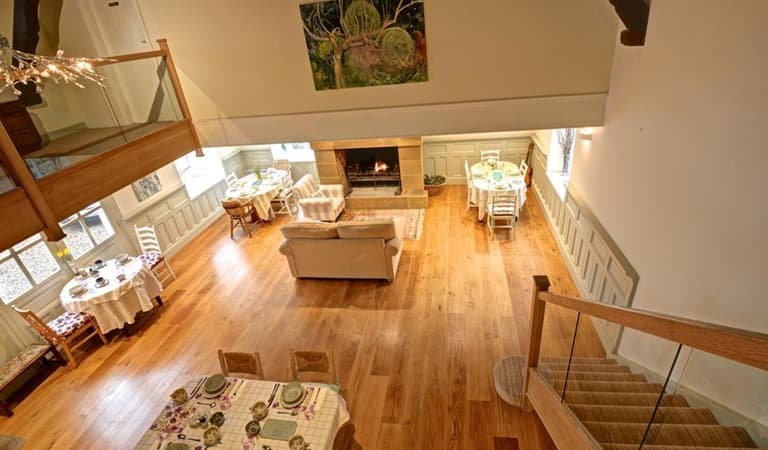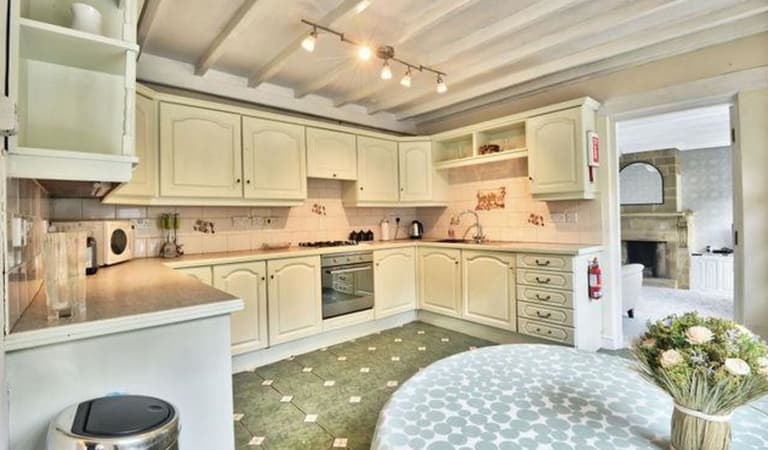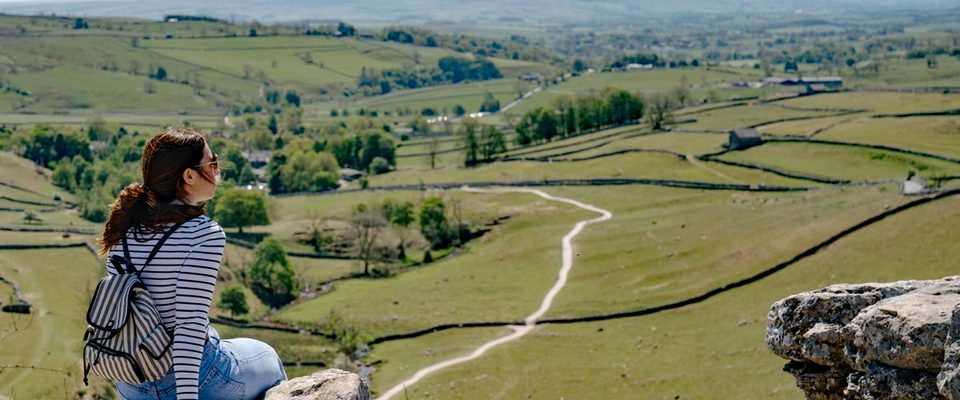- Index
- Lealholm To Grosmont Walk
Lealholm to Grosmont Walk
It’s a tale of four contrasting valley villages on this linear walk in the central part of the Esk Valley.
About Lealholm to Grosmont Walk
It’s a tale of four contrasting valley villages on this linear walk in the central part of the Esk Valley. In just under 6 miles you’ll see the different ways in which settlements have been influenced by their surroundings over time. Stepping stones and bridges – at Lealholm, Glaisdale and Egton Bridge – mark important crossing points, used for centuries for trade and travel. Meanwhile, Victorian ironstone mining and the railway age transformed Glaisdale and Grosmont from rural hamlets to centres of industry in just a few years. The route sticks close to the river at times and has the Esk Valley Railway as a constant companion – which makes it an easy walk to do by public transport. Take the train from Grosmont to Lealholm and then walk back, following signs, waymarks and the salmon symbol for the ‘Esk Valley Walk’.
Great for: riverside rambles, family walks, woodland wanders L ength:5¾ miles (9.3km) Time: 3 hours
Start/Finish: Lealholm station/Grosmont station Grid Ref: NZ 762 078OS Map: Ordnance Survey OL27
Refreshments: Lealholm, Glaisdale, Egton Bridge, Grosmont Toilets: Start/Finish of the walk
About this walk
This is the third section of the Esk Valley Walk (EVW3), a 37-mile ‘Regional Route’ from Castleton to Whitby. Put all 4 sections together to complete the route, or walk each section individually for great days out in the Esk Valley – also see EVW1, EVW2 and EVW4.WalkFor the most part, this is an easy walk on riverside and woodland paths and level bridleways and tracks. There are gates and one stile en route, and a crossing of the Esk over stepping stones at Egton Bridge (though an alternative road route is available there). The field paths and woodland tracks can be wet and muddy after rain – take care in particular on the stone trod in East Arncliff Wood, which can be slippery under foot.
Dogs: The route runs through farmland and farmyards – please always keep your dog on a short lead near livestock. Help prevent disturbance to wildlife, including woodland and river wildlife, by keeping your dog under control at all times. On bridleways, it’s safest to keep your dog on a lead if cyclists or horse-riders pass by.
Lealholm and the River Esk
Lealholm – the name means ‘the settlement by the willow trees’ – is sited in a lovely location on the banks of the River Esk. It’s a beautiful scene but it’s no accident that the village is here. It developed around a handy crossing point, just downstream from a deep and treacherous ravine, and the handsome 17th-century bridge and the village stepping stones (not to mention an earlier ford) all indicate that people have found it convenient to cross the Esk here for centuries.The rushing waters of the Esk also provided the farming village of Lealholm with another source of prosperity in earlier times. A corn mill was established in the 14th century – its successors operated until just after the Second World War – and there was a thriving paper mill here in the 19th century.
Wild about woods
Mill Wood near Glaisdale has a variety of native woodland trees, including alder, downy birch, hazel, oak and holly. This, together with the range of plants (wood sorrel, bluebell, broad buckler fern, and greater woodrush, among others), suggests that it is an ancient woodland; i.e, that it has been tree-covered for at least 400 years. This is important because it means that it has survived from a time when the landscape was far less intensively managed. Ancient woods have a special value, because they may be as near to natural as woodland can be in this country. However, it doesn’t mean that they are entirely natural. Most woodland has been managed in some way in the past, and even ancient woods are a living record of centuries of interaction between people and trees. Valuable timber and a huge range of products from the underwood, or coppice, provided our ancestors with a reason to keep these areas wooded. Others may have survived by chance, on ground that was not worth clearing for agriculture. Most are now valued landscape features in the National Park.
Glaisdale
It has a quiet character today, but the terraces of slate-roofed cottages at Glaisdale are the tell-tale sign that this was once a busy mining area. Meanwhile, below the railway station another part of Glaisdale’s heritage is written in stone at romantic Beggar’s Bridge. An inscription on the bridge suggests that it was built in 1619, and the initials TF refer to Thomas Ferries, the son of a moorland farmer. When he was courting he had to ford the Esk to meet his young lady, Agnes, whose father considered Thomas too poor for his daughter. Thomas resolved to seek his fortune at sea but, with the river in flood, was unable to cross to kiss his sweetheart goodbye. Returning later, a wealthy man, Thomas married Agnes and built a handsome bridge on the very spot.
Egton Bridge
Until the 1940s, anyone using the Egton Estate toll road had to pay a charge – look out for the noticeboard listing the charges on the wall of the toll house, towards the end of the road. Today, it is used by permission of the landowner. The church on the left, by the toll road turn-off, is the Roman Catholic church of St Hedda, which dates from 1867. Egton Bridge has had a notable Catholic presence since the 16th century, at a time when it was considered treasonable to be of the Catholic faith and to be trained as a Catholic priest. Many priests conducted Mass in private houses and sheltered with wealthy Catholic families and sympathisers, including Father Nicholas Postgate of Egton Bridge, who conducted his ministry in the North York Moors over decades, without being informed upon. In the end he fell foul of the authorities in 1679, aged 82, and was taken to York where he was hanged, drawn and quartered for his faith – one of the last of the ‘Catholic Martyrs’.
Did you know? The ornate drinking fountains in Lealholm, installed around the village in 1904, were the gift of benefactor Sir Francis Ley, former owner of the Lealholm Estate. Each fountain is decorated with his monogram, an intertwined F and L.
Nearby businesses
Grosmont House Bed and Breakfast
Grosmont House sits at the heart of the picturesque village of Grosmont,… Grosmont House sits at the heart of the picturesque village of Grosmont, sheltered by the gentle hills and the with the river Esk within earshot.
Grosmont House Holiday Cottages
Grosmont House sits at the heart of the picturesque village of Grosmont,… Grosmont House sits at the heart of the picturesque village of Grosmont, sheltered by the gentle hills and the with the river Esk within earshot.
Broom House at Egton Bridge
Discover Broom House at Egton Bridge, near Whitby in North Yorkshire,… Discover Broom House at Egton Bridge, near Whitby in North Yorkshire, where country and coast combine. Awarded Trip Advisor's Travellers Choice Award…
The Inn On The Moor Dining
The Inn on the Moor Hotel is the friendliest of dog-friendly Hotels' in… The Inn on the Moor Hotel is the friendliest of dog-friendly Hotels' in Goathland with accessible accommodation, homemade food we really care and the…







